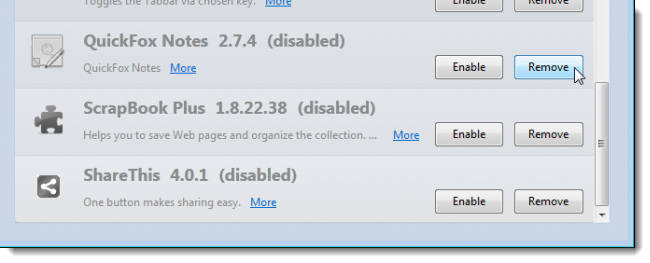How to Make Mozilla Firefox Fast
Have you noticed your usually speedy Firefox browser slowing down, or even crashing on you?Unnecessary plugins, extensions, and even browsing data can slow your browser down to a crawl, or make it crash.
Here’s how to fix it.
We’ll show you how to speed up Firefox by disabling plugins and extensions and clearing the browsing data.
Disabling Plugins
Plugins help Firefox manage internet content such as Flash, Silverlight, Java, and Office, and there are probably many installed plugins you don’t need.Because they can slow down the browser, you can disable ones you are not using.
NOTE: Plugins cannot be deleted or uninstalled, only disabled.
An exception would be a plugin that was installed as part of an extension and you uninstall the extension.
Then, the plugin is automatically removed. To disable a plugin in Firefox, click the Firefox button and select Add-ons from the drop-down menu.
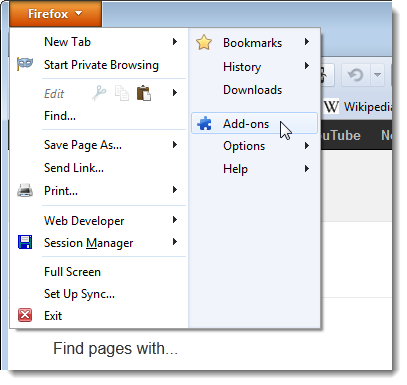 The Add-ons Manager opens on a new tab. Click the Plugins tab on the left side of the tab. For each plugin you want to disable, click the corresponding Disable button.
The Add-ons Manager opens on a new tab. Click the Plugins tab on the left side of the tab. For each plugin you want to disable, click the corresponding Disable button.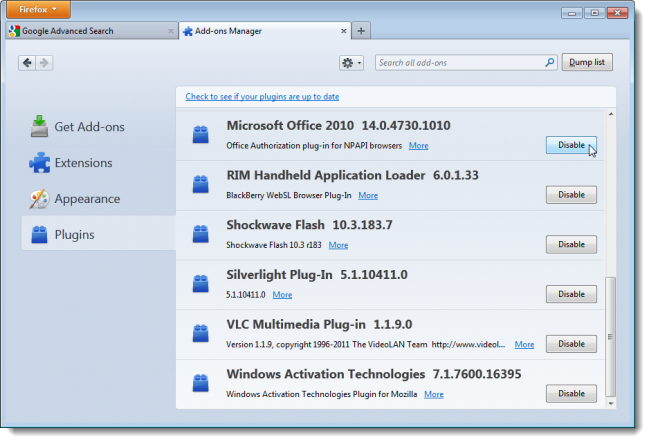 The disabled plugins display grayed out and the Disable button becomes an Enable button you can use to re-enable the plugin, should you want to.
The disabled plugins display grayed out and the Disable button becomes an Enable button you can use to re-enable the plugin, should you want to.NOTE:
All disabled plugins are moved to the end of the list of plugins.
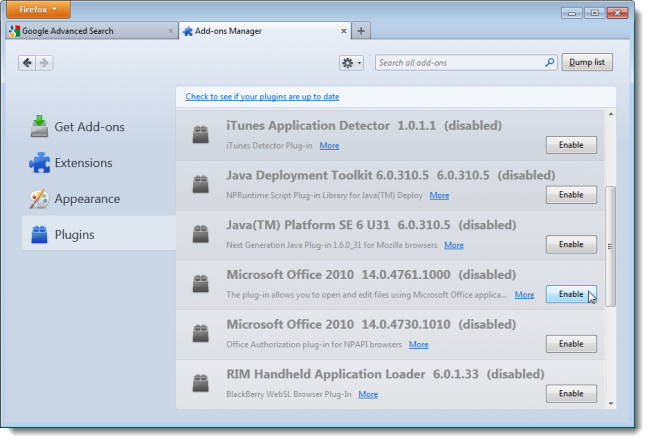 You should be safe disabling almost every plugin except for Flash, which is used on a lot of sites on the web.
You should be safe disabling almost every plugin except for Flash, which is used on a lot of sites on the web.
Disabling Extensions
You can add all kinds of additional functionality to Firefox through the use of extensions, such as extensions to blockadvertisements, download videos, integrate with social networking sites, enhance Firefox features, and even add features available in other browsers.
However, the more extensions you install, the slower Firefox can become.
To speed up Firefox, you can disable extensions without having to uninstall them.
That allows you to easily enable them again if you want to use them.
To disable an extension, click the Extensions tab on the left side of the Add-ons Manager.
If you closed the Add-ons Manager after disabling plugins, open it again as described earlier in this article.
Find the extension you want to disable and click the Disable button to the right of the description.
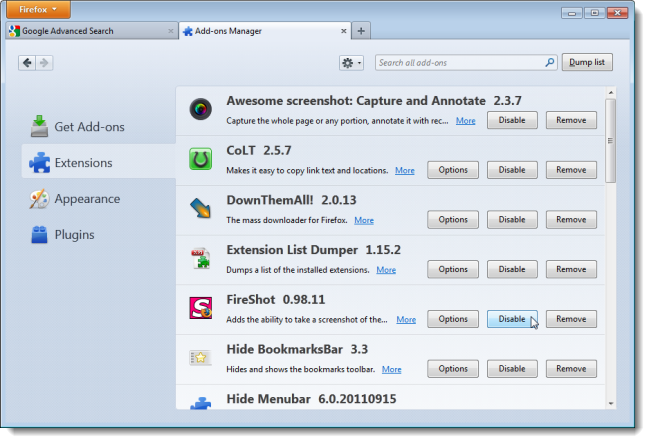 Most extensions require you to restart Firefox to be disabled. If you get a restart message as shown in the following image, click the Restart now link.
Most extensions require you to restart Firefox to be disabled. If you get a restart message as shown in the following image, click the Restart now link.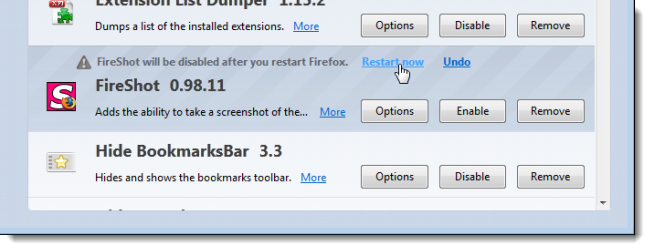 The disabled extensions are grayed out and the Disable buttons become Enable buttons allowing you to re-enable extensions at any time.
The disabled extensions are grayed out and the Disable buttons become Enable buttons allowing you to re-enable extensions at any time.Notice that the Option button is not available for disabled extensions.
All the disabled extensions are moved to the end of the extensions list.
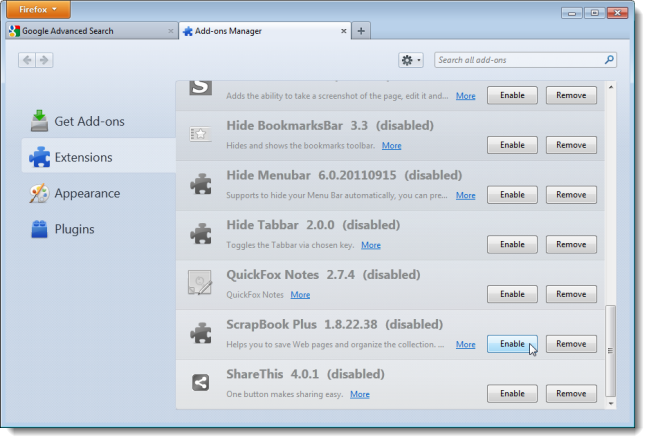
Uninstall Plugins
As mentioned earlier, plugins cannot be manually uninstalled from within Firefox, at least easily.However, most plugins come with their own uninstallation utilities.
See the plugins article on the Firefox Help site for information on uninstalling various common plugins.
If an uninstaller program doesn’t work for a particular plugin, there is a way to manually uninstall a plugin.
Remove Extensions
If you want to completely remove an extension, open the Add-ons Manager, if it is not already open, click the Extensions tab, and find the extension you want to remove in the list. Click the Remove button. If the restart message displays above the extension title, click the Restart now link to complete the removal process.NOTE: You can remove an extension even when it’s disabled.
